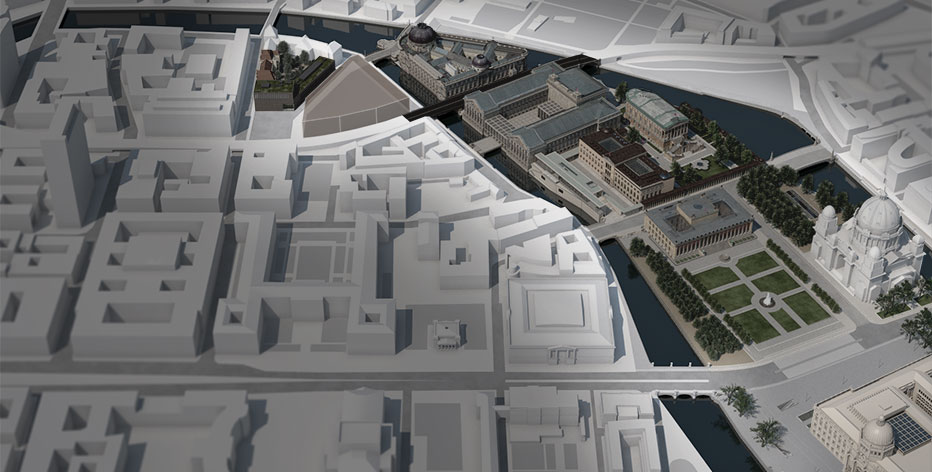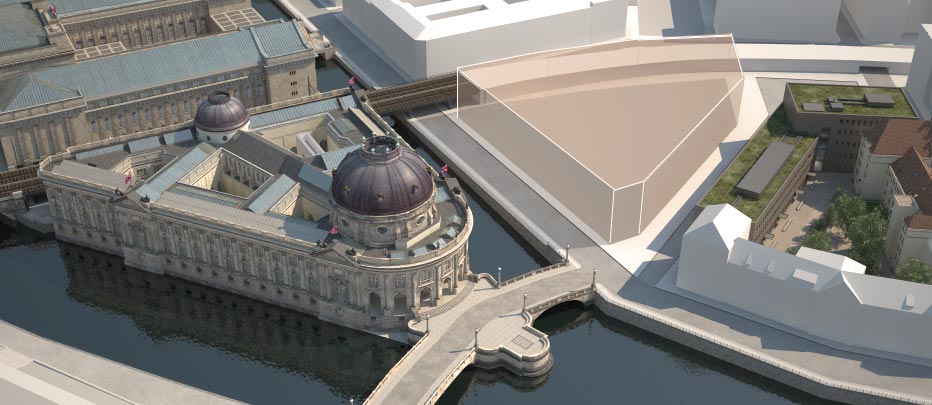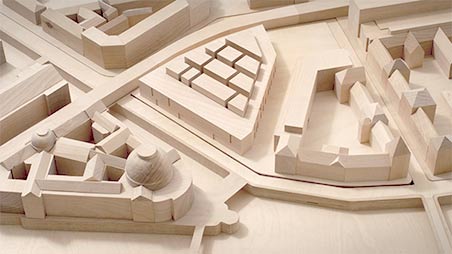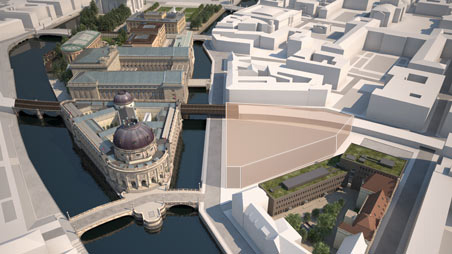The Museum Island – A Location for European Art and Culture
Called the “Museum Courtyards,” the site of the former Friedrich-Engels-Kaserne has been intended for use by the Stiftung Preussischer Kulturbesitz (Prussian Cultural Heritage Foundation) since the 1990s. It is located immediately opposite the Museum Island on the other side of the Kupfergraben. On the northern part of the site, the Archäologisches Zentrum was opened in fall 2012. The southern part is currently being used for construction site logistics.
The idea of creating a new museum building on the southern section of the Museum Courtyards has been pursued since the late 1990s. That way it would be possible to present the Old Master Paintings and the Sculpture Collection both in the new museum and in the neighboring Bode-Museum. In order to create space on the Museum Island for the presentation of the collections, the new building is also intended to be used for internal museum-related functions, including academic administration, storerooms, and restoration workshops.
Since German reunification, the Stiftung Preussischer Kulturbesitz and its Staatliche Museen zu Berlin (National Museums in Berlin) have been working towards the creation of distinctive museum quarters for their outstanding collections. If the Old Masters collection could be presented here in the context of the development of occidental art and culture and their roots, this would make the Museum Island into a complete whole.



